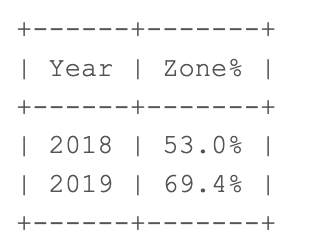Tommy John’s Legacy
Tommy John belongs in the Hall of Fame. With 12 more wins to his name, he almost certainly would be. However, his record 188 career no-decisions held him back. With more advanced analytics, his case becomes clear. In terms of all-time WAR, Tommy John sits in 22nd among pitchers, sandwiched between John Smoltz and Phil Niekro. His impressive total can be attributed largely to his astounding longevity, pitching 26 seasons in MLB. This becomes even more incredible when his ulnar collateral ligament (UCL) is taken into account. Tommy John underwent the first UCL reconstruction (UCLR) ever performed on a pitcher in 1974. After taking the 1975 season off, he went on to pitch 14 (!) more seasons, essentially putting in an entire career’s worth of work after a still experimental surgery.
Tommy John surgery, as it is now called, is still extraordinarily common in Major League pitchers, and the specter of a UCL tear haunts pitchers and general managers alike. But how does actually undergoing Tommy John surgery affect a player’s ability to perform? There have been considerations that Tommy John surgery actually improves performance, though this assertion is controversial at best.
Brief Review of Current Literature
A 2014 cohort study from Erickson et al. investigated MLB pitchers who underwent UCL reconstruction and compared performance measures between those who underwent surgery and controls that were matched by age, BMI, position, handedness, and MLB experience. Also measured was the rate of the return to pitching after surgery. This study showed that 83% of those who underwent surgery were able to return to pitching. In terms of performance, it was found that performance significantly declined the year before surgery and improved after surgery in the experimental cohort (as measured by losses, losing percentage, ERA, walks, hits allowed, runs, and home runs allowed). The surgical group even improved in some measures after surgery as compared to the controls, specifically in terms of losses, losing percentage, ERA, walks allowed, and hits allowed per inning.1
Another cohort study shortly followed in 2014 from Drs. Jiang and Leland that investigated the velocity of MLB pitchers after UCL reconstruction. In this study, of those who were able to return to pitching at the major league level, the mean velocity they were able to reach was unchanged with respect to the control group. In addition, performance measures of those who received surgery were not affected relative to the control group (in this case ERA, BAA, W/9, K/9, and WHIP).2
Yet another cohort study came in 2015 by Marshall et al., which compared 33 MLB pitchers who received Tommy John surgery to 33 age-matched controls. These groups showed mixed results in terms of performance, with little effect of surgery on ERA and WHIP. Surgery was correlated instead with a decline in innings pitched and BB/9. Of note, those who received surgery had significantly shorter careers after surgery than the control group (a difference of 0.8 years (P<0.1)).3 Read the rest of this entry »



